Postal Service Prevents Shipping Biblical Books to Sudan

Welcome to the Wonderful World of the Old Testament / Hebrew Bible! Enjoy these postings of resources, projects by my students, movies and images, links, reflections, humor, and other items related to teaching the Bible at a Flagship Seminary. This blog is interactive: You can add your comments and post your questions. Go ahead, it's fun...


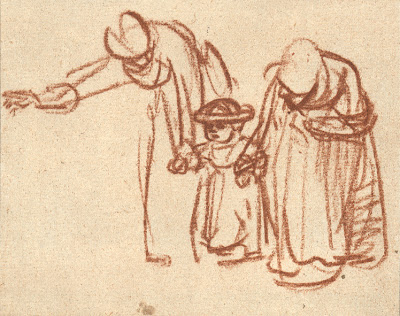

...the Zephaniah reading is not all about victory. Zephaniah also talks about a people humble and lowly, a remnant. And these people, who sound a little pathetic, these are the same ones whom no one shall make afraid. Shame will be turned to praise.
It sounds like strength coming out of weakness, which we hear over and over in the Bible. Moses told God again and again that Moses was not up to the task, and yet, as we heard tonight, he led the people out of slavery in triumph. Ezekiel saw a valley strewn with dried-out bones, and before his eyes the same bones were transformed into a vast multitude.
None of this makes a lick of sense, and yet these are God’s promises to you and to me. Again and again, we turn away from God, but as we heard in Genesis, we, God’s creatures, are good. And in our weakness, we are called. Everyone who thirsts is invited to the water. God will save the lame and the outcast.
These are wild promises, and what do we offer in return? By our baptism, we came into a covenant with God. For many of us, those baptismal promises were made on our behalf, when we were babies, unable to speak for ourselves. But tonight is one of the nights that in response to God’s promises, and in anticipation of the resurrection and the end of the darkness and the rest of the story that will immediately follow, we will renew these vows; we will make these promises ourselves, as a community.
We are approaching the end of the darkness in our service, but not in the world. When we leave church tonight, it will be dark outside, and we might be tempted to lose hope. We can lose hope because of Iraq; we can lose hope because of Darfur; and we can lose hope because of tragedies closer to home, because of the suffering that surrounds us. What kind of people can celebrate in times like today?
We are that kind of people. We are foolish enough to believe we can change the world, to be reckless enough to see good in all creation; believing that, despite the insurmountable odds, we, in all our weakness, can participate with God in the deliverance of the oppressed.
We are foolish enough to believe that God can and has overcome death, and that no sin is so great that it cannot be forgiven through Jesus Christ.
At this point in our service, we are still in the darkness, but we do know the rest of the story, and we are foolish enough to put our faith in that glorious story of the resurrection. We will now renew our baptismal promises, outrageous and solemn promises that we can not possibly keep without God’s help. And with God’s help, we will keep those promises, and believe that, even in the darkness, God never abandons us.
We are an Easter people, even in the darkness.
 We currently have a visiting scholar from Sudan here at VTS, supported by the new Merrow Fellowship: Rev. Oliver Duku. He is generously helping some of the students, offering an African perspective on biblical interpretation. Here is a bit of his background:
We currently have a visiting scholar from Sudan here at VTS, supported by the new Merrow Fellowship: Rev. Oliver Duku. He is generously helping some of the students, offering an African perspective on biblical interpretation. Here is a bit of his background: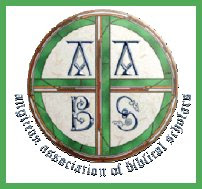


Cartoon by Dave Walker. Find more cartoons you can freely re-use on your blog at We Blog Cartoons.
Labels: humor

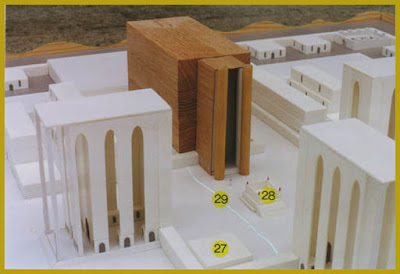
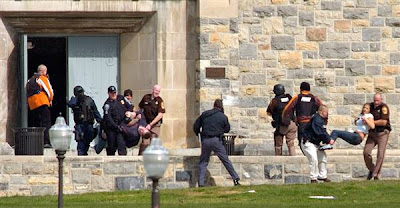


Obadiah verse 1
Major Commentaries on Minor Biblical Books - MCOMBB 1
by A.N. Onymous
Winged Bull Press, 2007
xvii + 483 pages, plus extensive charts and plates, English
Cloth
List Price: $75.00
Your Price: $63.75
Description from Eisenbrauns:
For too long biblical scholars have poured all their attention into the major books of the Bible. We feel it is time to pay more attention to the shorter books of the biblical corpus. To further this end, we are introducing a major new commentary series, Major Studies on Minor Biblical Books. The introductory volume, available now, is the biblical book of Obadiah, verse 1. This 500 page volume, lavishly illustrated with extensive charts and full color plates, concentrates on the overlooked importance of verse 1 in the canonical process and its implications for the entire biblical corpus, indeed for all theological undertakings.
U. Will B. Bore, ed. for the series, expresses the purpose of the series very clearly, "We feel that in an age of inclusiveness and pluralism, it is only fair to examine the importance of these frequently overlooked biblical books. We are delighted that Eisenbrauns has agreed to publish this milestone in biblical studies."
We strongly encourage you to place a standing order, since this will be a must-have reference series. The current plan is to issue one volume per year, beginning with Obadiah. The next volume will examine Obadiah, verse 2 and will be available in page proofs at AAR/SBL in November. The current page count for volume two is 479 pages, and we anticipate each volume will be of similar length. Imagine being able to reach over to your bookshelf and have over 10.000 pages of commentary and background information on the book of Obadiah! It staggers the imagination. Now, multiply that times the other shorter books and pericopes of the biblical corpus.
Because of the massiveness of this project, after the initial few volumes on Obadiah, we will begin publishing multiple volumes on other books or pericopes each year. Our goal is to have one volume per month, each month on a different biblical book or pericope. We are currently soliciting authors for the Greek New Testament books of II John (13 verses), III John (14 verses), Jude (25 verses), and Philemon (25 verses).
For the Hebrew Bible, we are in need of authors for some of the overlooked pericopes of the book of Judges. Each of the minor Judges will receive at least one volume, with more planned for important judges, such as Jephtha. We anticipate each volume will cover one verse each and be at least 400 pages. Because of the lengthy undertaking involved, we prefer younger scholars, who are able to dedicate the next 15-50 years of their life to this milestone in biblical and theological understanding.
Labels: humor
Labels: humor; video
Labels: art
Labels: art




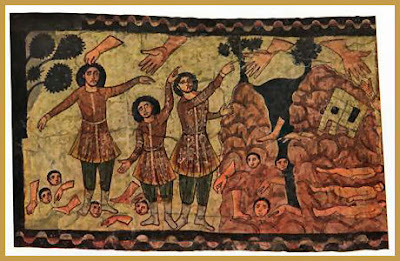







DIY Ossuary Kit
This item is heavy and will incur extra shipping costs!
Kit includes book of Bible names, measured plans, hammer, chisels, and 1 large block of genuine Indiana limestone, rough-shaped and ready for your inscriptions. Specify color when ordering. Standard size is 22 x 14 x 12"; custom sizing is available.
Bones not included. We suggest contacting your local teaching hospital for legally-obtained, gently-used cadavers.
Winged Bull Press, 2007
English
LImestone
List Price: $950.00
Your Price: $883.50
Labels: humor
